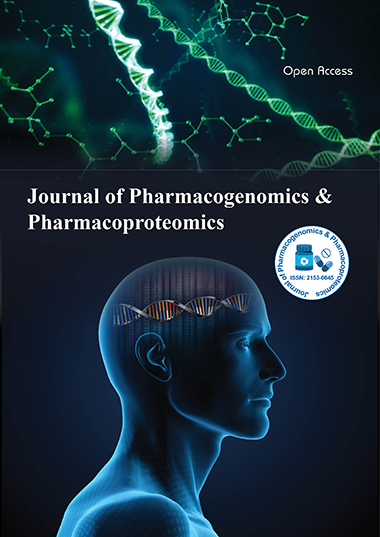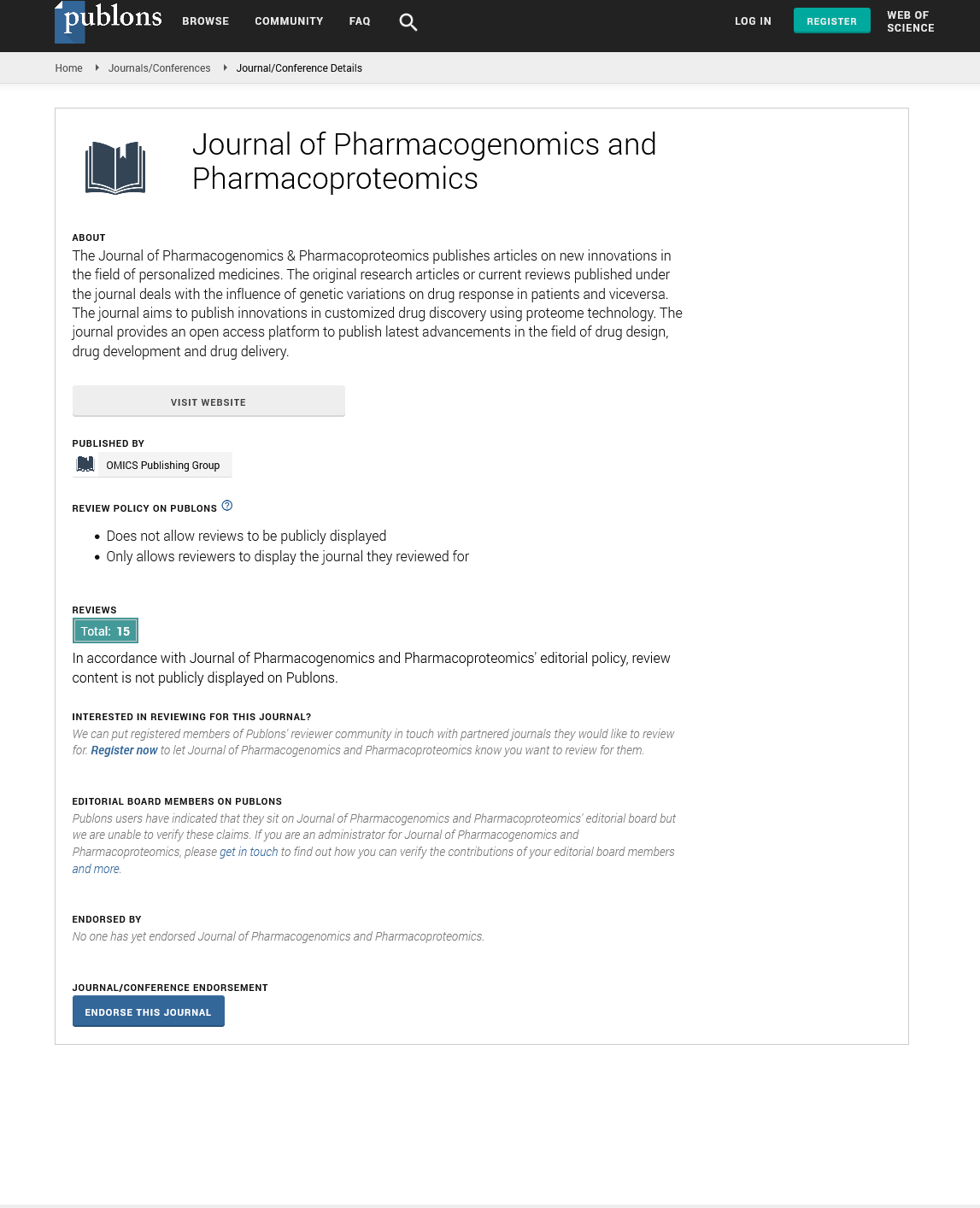Indexed In
- Open J Gate
- Genamics JournalSeek
- Academic Keys
- JournalTOCs
- ResearchBible
- Electronic Journals Library
- RefSeek
- Hamdard University
- EBSCO A-Z
- OCLC- WorldCat
- Proquest Summons
- SWB online catalog
- Virtual Library of Biology (vifabio)
- Publons
- MIAR
- Euro Pub
- Google Scholar
Useful Links
Share This Page
Journal Flyer

Open Access Journals
- Agri and Aquaculture
- Biochemistry
- Bioinformatics & Systems Biology
- Business & Management
- Chemistry
- Clinical Sciences
- Engineering
- Food & Nutrition
- General Science
- Genetics & Molecular Biology
- Immunology & Microbiology
- Medical Sciences
- Neuroscience & Psychology
- Nursing & Health Care
- Pharmaceutical Sciences
Opinion - (2024) Volume 15, Issue 1
Exploring the Effects of Pathogenicity Chromosomes on Viral Infections and Investigating the Impact
Zunori Ichi*Received: 01-Jan-2024, Manuscript No. JPP-24-24896; Editor assigned: 05-Jan-2024, Pre QC No. JPP-24-24896 (PQ); Reviewed: 19-Jan-2024, QC No. JPP-24-24896; Revised: 26-Jan-2024, Manuscript No. JPP-24-24896 (R); Published: 02-Feb-2024, DOI: 10.35248/2153-0645.23.15.087
Description
Pathogenicity chromosomes play an important role in the development of infectious diseases. These chromosomes are sections of DNA that contain genes responsible for the pathogenicity, or ability to cause disease, of an organism. By understanding how these genes interact with other components of the host's environment, scientists can better predict and control the spread of infections. This is especially important in cases where viruses are involved, given that they need some of the cellular machinery necessary for replication. In recent years, research into pathogenicity chromosomes has were shown on their role in viral infections. By studying how these genetic elements affect viral replication and virulence, scientists can gain insight into how pathogens spread and cause disease. It has also been discovered that certain mutations may increase a virus’s ability to infect a person or animal by altering its ability to replicate or evade the immune system. The implications of this research extend beyond just viral infections. By understanding more about pathogenicity chromosomes and their impact on infectious diseases, researchers can develop better strategies to prevent and control outbreaks. For example, developing vaccines or drugs that target specific genetic elements may help reduce transmission rates or reduce the severity of symptoms associated with a particular infection.
In conclusion, knowledge regarding pathogenicity chromosomes is essential for understanding infectious diseases and developing effective treatments and prevention methods. While much is still unknown about how these genetic elements impact viral infections, future research promises to bring more insight into this interesting field.
Investigating how pathogenicity chromosomes influence fungal infections pathogenicity chromosomes are an integral part of the study of fungal infections. These chromosomes, also known as pathogenicity islands, are DNA sequences that regulate pathogenic behavior in fungi. By understanding the role of these chromosomes in disease progression, we can gain insight into how our bodies defend against these infectious organisms. This article will explore the impact of pathogenicity chromosomes on fungal infections and discuss ways to investigate their potential for combatting infection.
Pathogenicity chromosomes are genetic elements present in some fungi that control their ability to cause disease. These genetic elements have been identified in species such as Candida albicans, Cryptococcus neoformans and Aspergillus fumigatus; however, they may be present in many others. They are composed of regions that contain genes responsible for virulence factors such as toxins, enzymes and adhesins which enable these fungi to invade host cells and cause infection. As a result, the presence of pathogenicity chromosomes can increase a fungus’s potential to cause disease.
The impact of pathogenicity chromosomes on infectious diseases is still being studied; however, it is clear that they can play a significant role in disease progression. For example, certain genes within these chromosomal regions have been associated with increased severity and spread of C. albicans infections in humans and animals. These genes are believed to promote adherence to host cells which leads to more efficient infection and potentially more serious outcomes for affected individuals. In addition, research has found that mutations within some pathogenicity chromosome genes can make certain fungi more resistant to antifungal drugs which further complicate treatment efforts.
In order to understand the impact of pathogenicity chromosomes on fungal infections, scientists must investigate their roles through careful observation and experimentation. A single strategy for doing this can be done is by comparing the DNA structure among different species or isolates of a particular fungus with varying levels of virulence; this allows researchers to identify genetic markers associated with increased or decreased pathogenic potential. In addition, scientists use an array of techniques including gene expression analysis and genome sequencing to determine the function of individual genes within a chromosome region or even entire chromosomal regions themselves so as to better understand their influence on fungal growth or infection progression within a host organism.
Pathogenicity chromosomes are important components in understanding how fungi cause various types of infectious diseases through their ability to alter gene expression patterns related to virulence factors such as toxins or adhesion molecules. Investigating these chromosomal regions gives scientists insight into how certain organisms become more or less infectious which is essential for creating effective treatments for those affected by fungal infections around the world.
Citation: Ichi Z (2024) Exploring the Effects of Pathogenicity Chromosomes on Viral Infections and Investigating the Impact. J Pharmacogenom Pharmacoproteomics. 15:087.
Copyright: © 2024 Ichi Z. This is an open-access article distributed under the terms of the Creative Commons Attribution License, which permits unrestricted use, distribution, and reproduction in any medium, provided the original author and source are credited.

